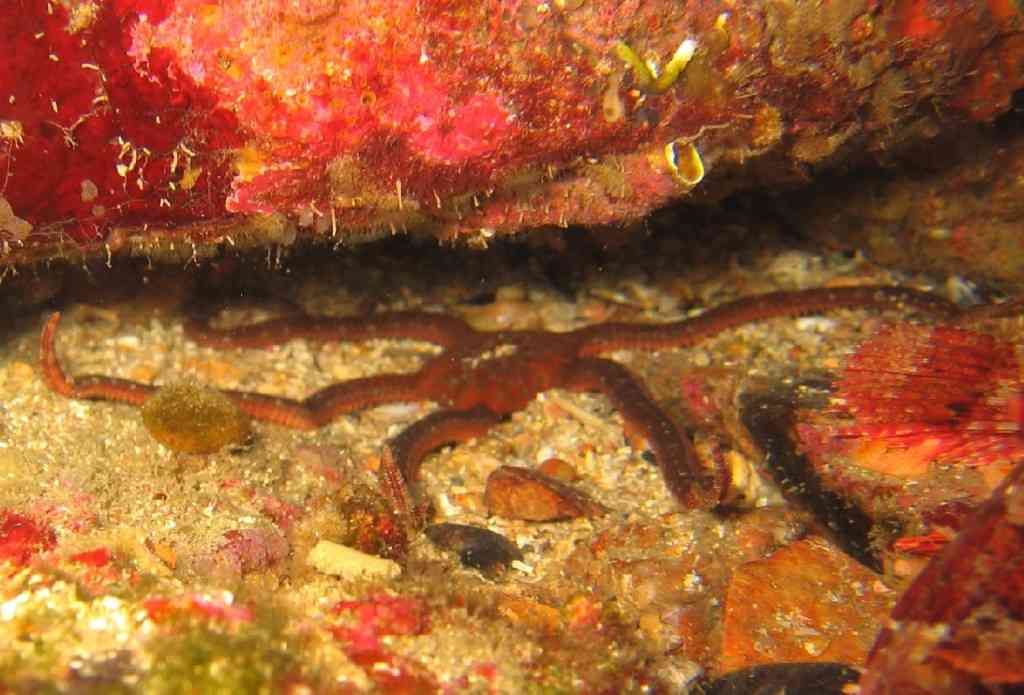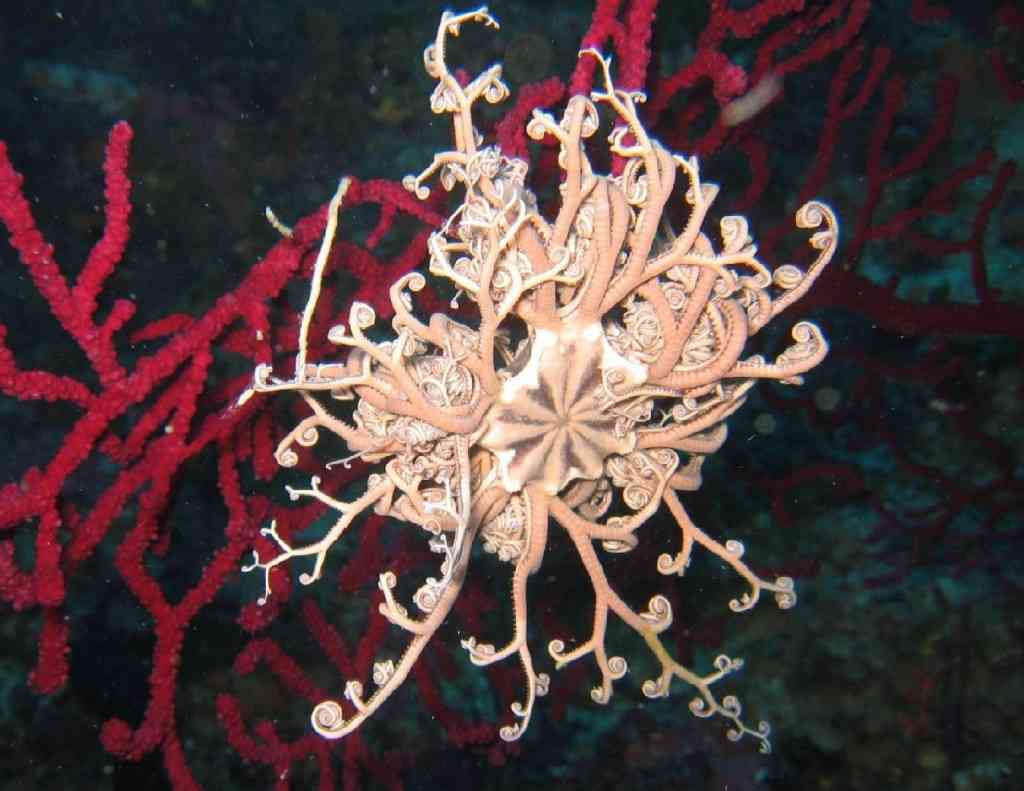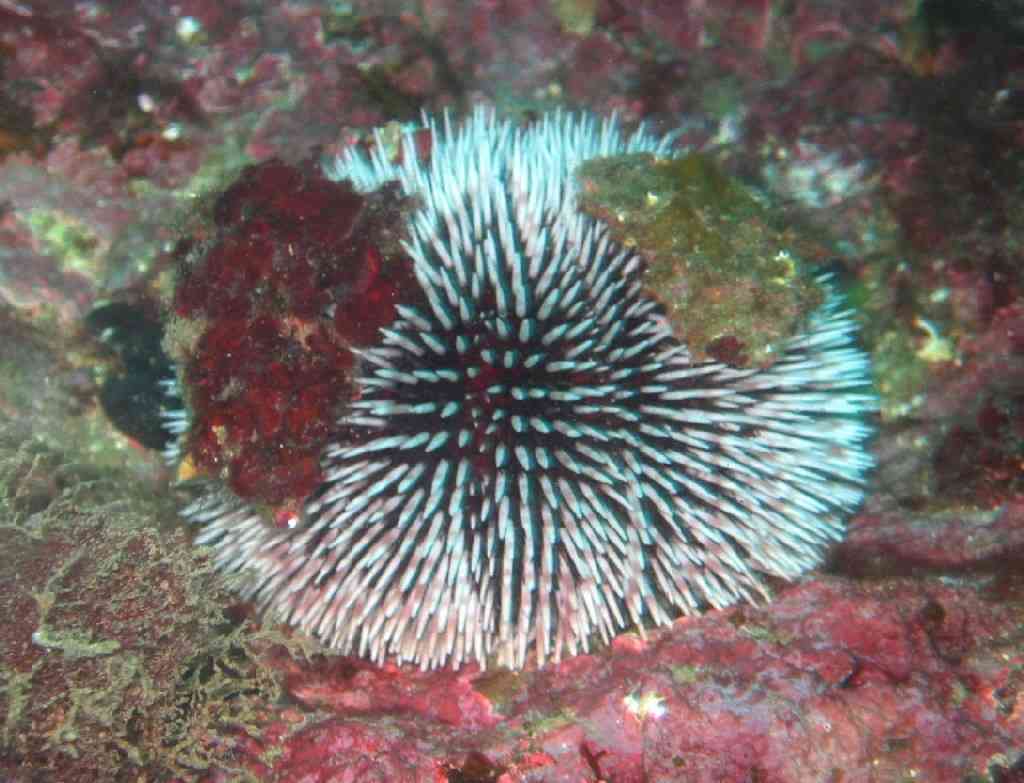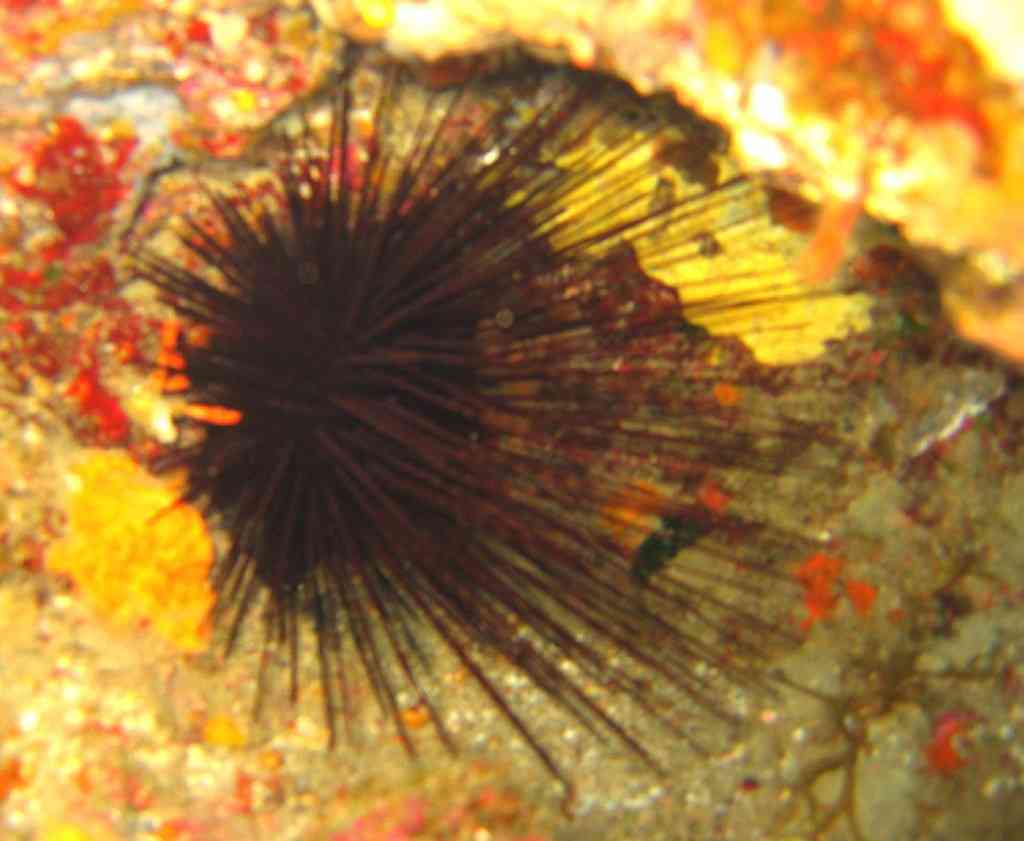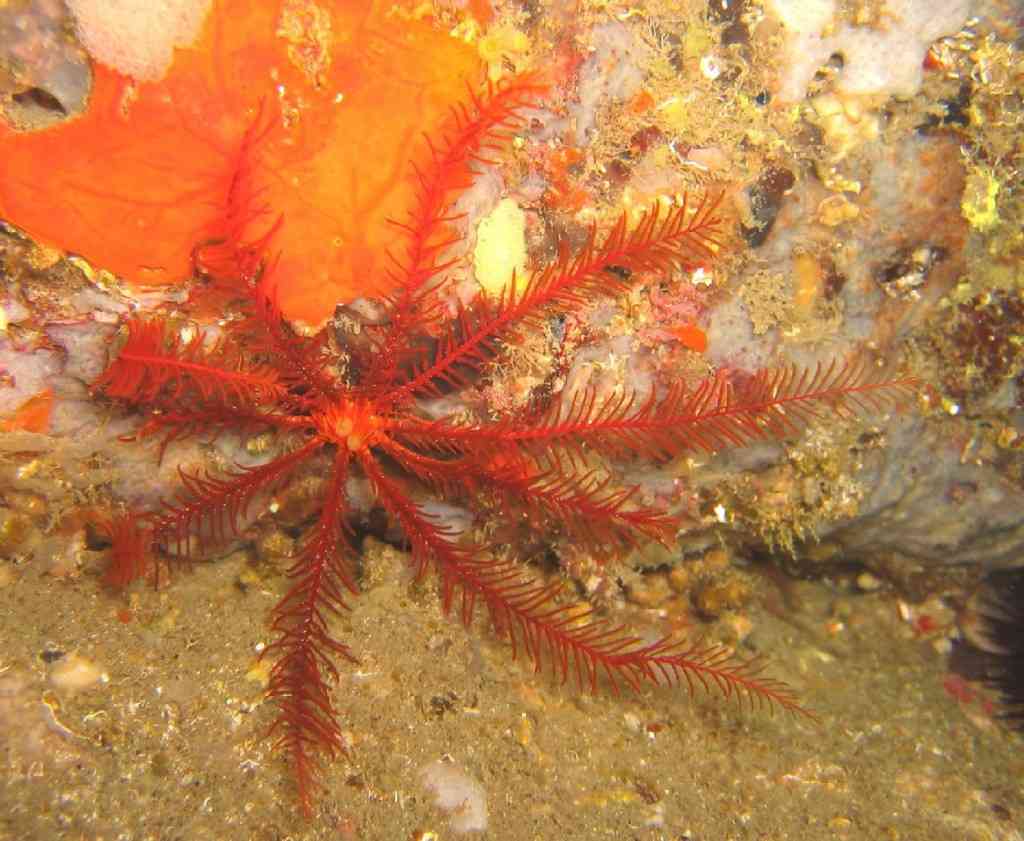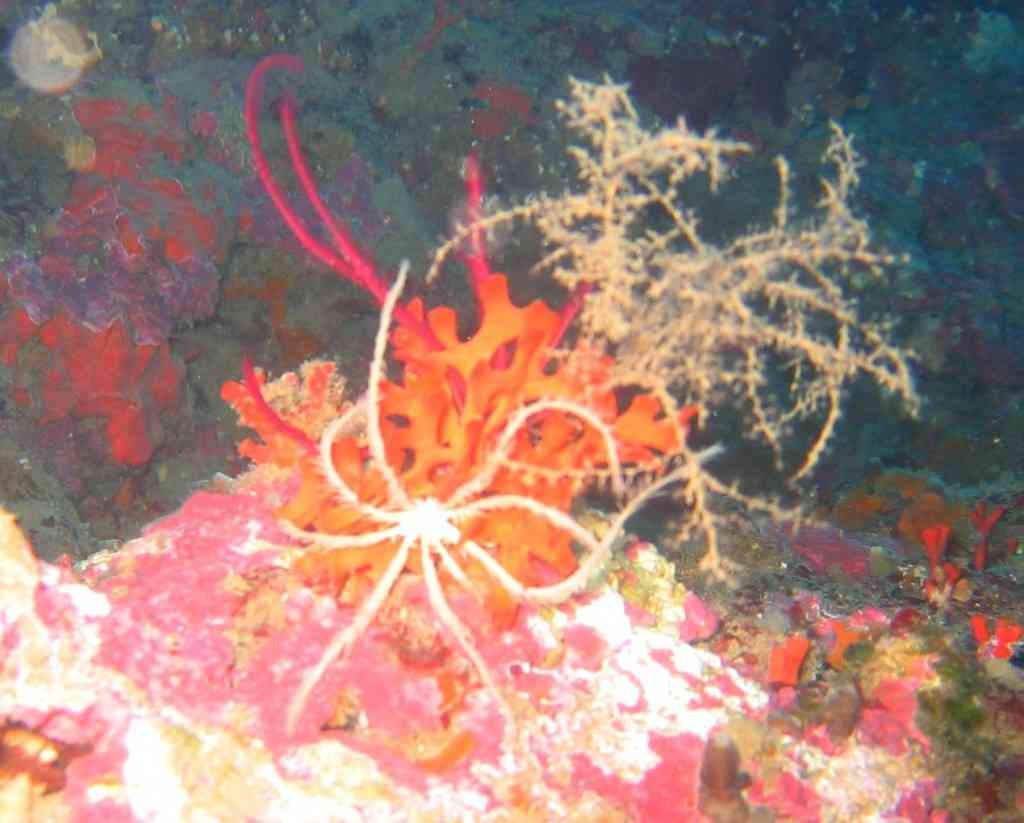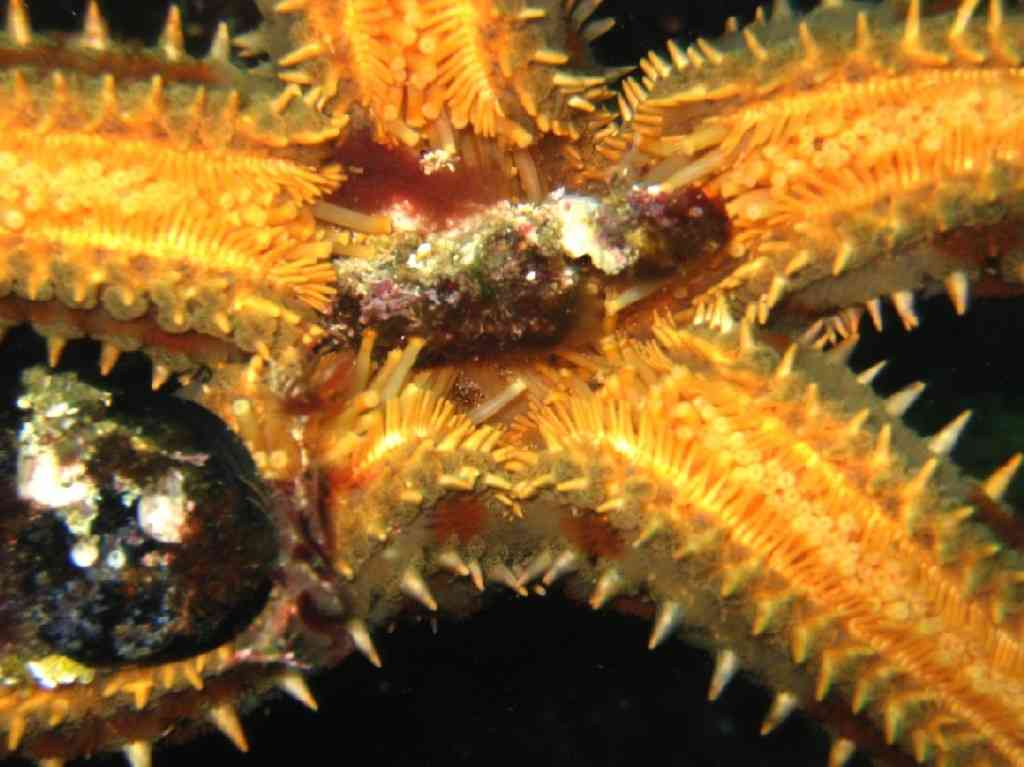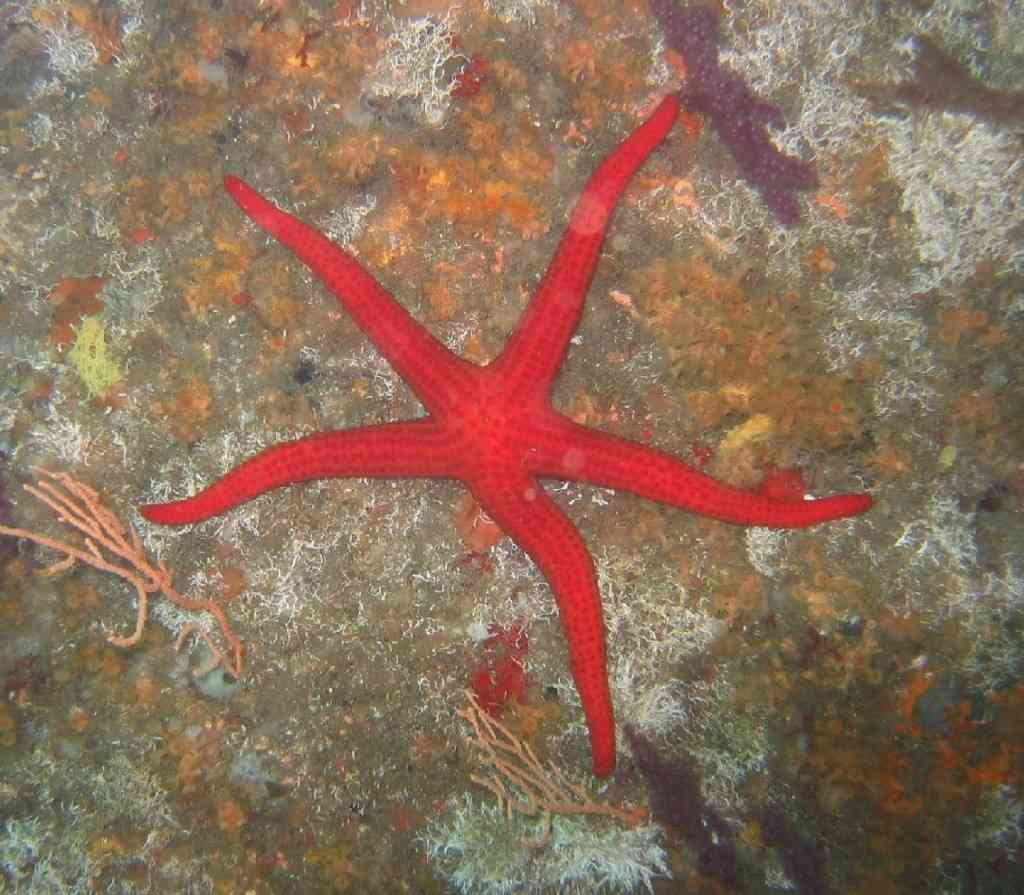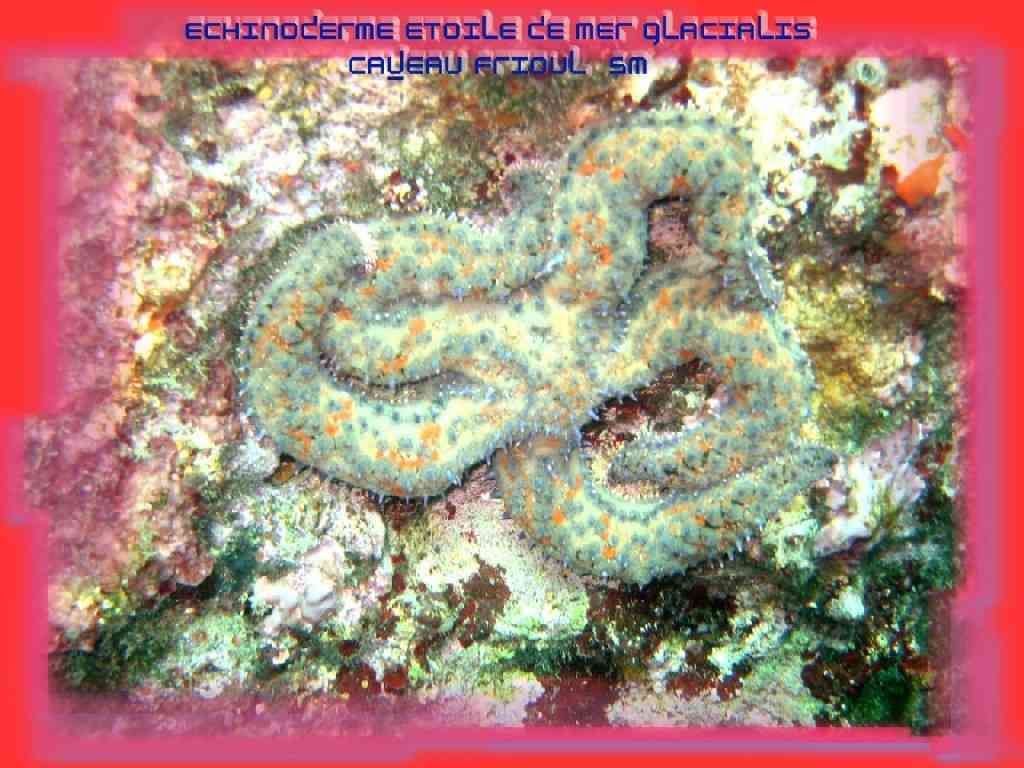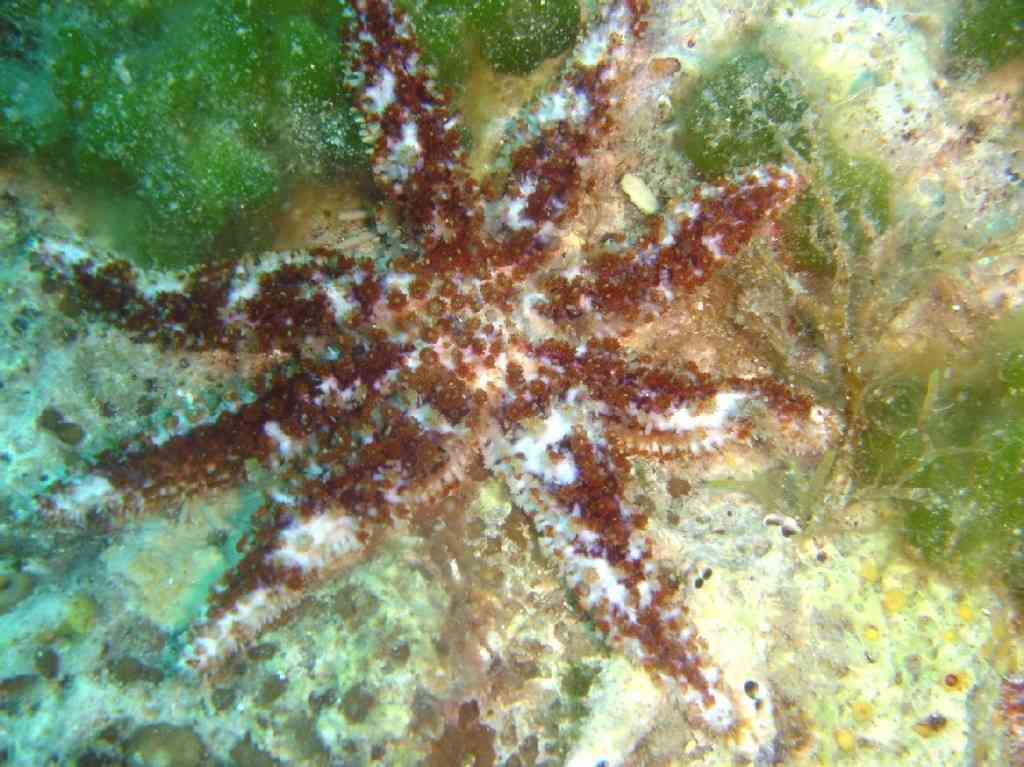The echinoderms
Number : About 6000 species described, exclusively Marines, are divided into 5 classes, including 800 sea urchins, 1500 starfish, 1100 Holothurians, 1900 Brittlestars and 700 crinoids.
Description : Bristling balls of articulated quills (sea urchins) or characteristic star shapes, echinoderms are difficult to confuse with species of another group except some holothurians whose form of more or less elongated pudding can divert.
Especially some tropical holothurians and, in our home, the surprising finger-licking whose body is hidden in a rock rift. He regularly licks his mouths one by one to recover the food particles and is easily confused with algae ballottées by the swell.
Five-order symmetry with, for some species, additional bilateral symmetry (sand urchins). The rigid skeleton, covered by a skin (echinoderm = ' thorny skin ') is made of joined limestone plates.
The rigidity and bonding of the elements with each other is variable according to the groups: the sea urchins have a perfectly rigid test, the brittlestars are more flexible and the Holothurians have only scattered spicules.
The internal aquifer system is very characteristic of the group with small feet coupled with bulbs, often finished by a suction cup (but never by a handshower as it was stated at the ADMS-Concarneau!). These podia, always in motion, pass through the limestone plates and are mainly used for locomotion. Muscles are lining the inside of the Podia. and blisters.
A more attentive examination at the base of the quills (with a magnifying glass) shows the presence of numerous small articulated pliers
Àl'extrémité of a peduncle
(Type reduced model sugar clamp).
These pedicellariae are used permanently
To eliminate small epibionts
Unwanted.
usaEcology: All the seas, benthic, they live rather at night, hidden in the day in the rocky crevices.
WrittenÈRecognition Res Quills Forms usually starry or globose but some sea urchins are very flat (the ' dollar ') and some stars have no arms (the Culcita)!
Danger : Wounds due to quills through the combination of divers may take some time to heal. Tropical sea Urchins (Asthenosum): The sting can be deadly.
Trophic relations : Filterers (brittlestars – particles captured by very flexible arms, without visible podia), Limivores (Holothurians – swallowing sand continuously), scavengers or predators (starfish – devastation of coral reefs by Acanthaster), grazers ( Sea Urchins – Aristotle's lantern, continuous-growth teeth).
The range of modes of nutrition is vast. The echinoderms are very well protected by their quills (sea urchin tiara) but it is not excluded that they are coined by fish such as the set-list.
Reproduction : Separate sexes; Fertilization is external, pelagic larvae very abundant swimmers.
There is no asexual reproduction in echinoderms.
Note : Autotomy, regeneration and frequent comet forms. We notice that there are a few starfish without anus or with a non-functional anus
usaEvolution: Feather stars belong to the group
The most recent.

